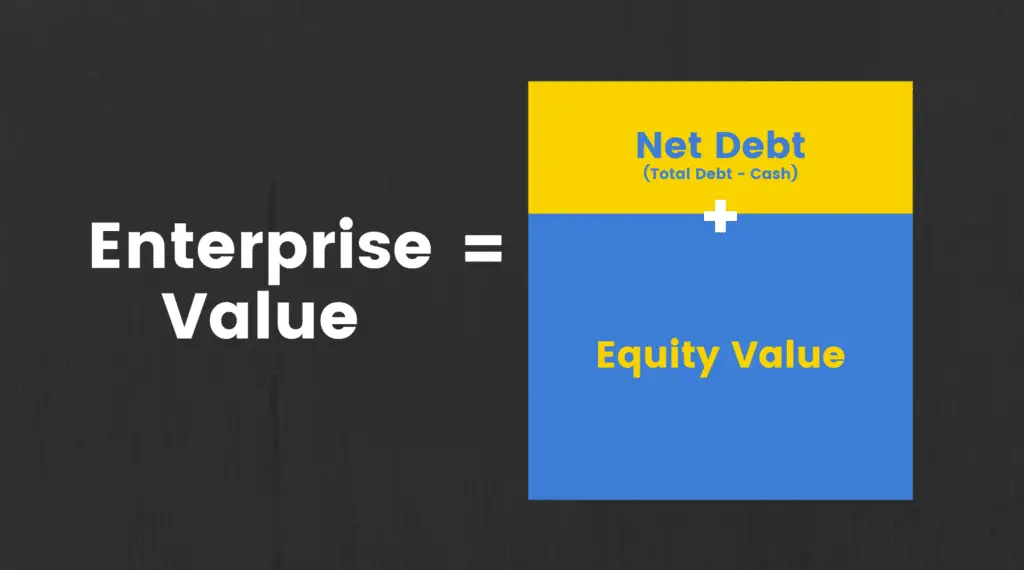This post may contain affiliate links, which means I’ll receive a commission if you purchase through my links, at no extra cost to you. Please read full disclosure for more information.
Payback period is the amount of time needed for the cash flows of an investment to recover the amount initially invested into an asset.
It is a measure of liquidity that is commonly used in capital budgeting and shorter payback periods are associated with more attractive projects.
Simply put, if you spent $100,000 as an initial outlay for a project, the payback period will tell you how long (usually in years) it will take to get your $100,000 back.
This is similar to break-even analysis except instead of determining how many units need to be sold to break even, the payback period determines how much time will need to pass to break even.
Payback period is a commonly used measure that is looked at alongside NPV, IRR, and cash on cash return.
The metric can be used on a variety of projects and investments including:
- Films
- Real estate projects
- Solar energy projects
- New attractions at a travel destination
The more detail provided for initial cash outlays and cash inflows into a project, the more accurate your payback period will be.
It is important to have an accurate picture of payback period because an inaccurate calculation leading to a longer payback period could lead to liquidity issues for the investor or company. Too much money would be tied up for too long.
PAYBACK PERIOD FORMULA AND CALCULATION
There are two ways to calculate the payback period. Both are simple to use and understand.
For the first way, calculate payback period by using the following formula:
- Payback Period = Initial Outlay/Cash Flow
The denominator is cash flow per unit of time. You can determine the unit of time you are analyzing, but generally, it is monthly or annual cash flows.
This payback period calculation only works when expected cash flows are the same from period to period. For example, this equation would work if a project expected to earn $90 each and every year after the initial outlay of $500.

Payback Period Example with Even Cash Flows
Let’s look at that example broken out. In the screenshot below, we have the cash flows listed for a project with an initial investment outlay of $500 with yearly cash flows of $90.
Using the equation, we have:
- Payback Period = 500 / 90
This results in a payback period of 5.56 years.

As you can see, it is a very simple calculation to run and conceptualize. The project will recoup its investment in a little over five and a half years.
Payback Period Example with Uneven Cash Flows
What about if cash flows are uneven?
In this case, you can use the second formula to calculate payback period:
- Payback Period = Full Years Until Recovery + (Uncovered Cost at the Beginning of the Recovery Year / Cash Flow During the Recovery Year)


In the waterfall chart, you can see visually that the project recoups its initial investment sometime between year 2 and year 3. We’ll use the second formula to calculate the payback period in the screenshot below.
The table with the orange header lists out our net cash flows and cumulative net cash flows from year 0 to year 4. The variables to the equation are listed in blue.
The formula is built in cell C10:
- Payback Period = 2 + (75/100) = 2.75
The answer results in a payback period of 2.75 years, which makes sense since the waterfall chart showed us that the initial investment was earned back between years 2 and 3.

WHAT IS A GOOD PAYBACK PERIOD?
A “good” payback period will vary depending on the investor, investment, and circumstance. Generally, when deciding between multiple projects, the project with the shorter payback period is the more attractive investment.
The payback period should not be the sole determining factor in capital budgeting. It should be considered alongside other financial metrics and analyses of micro and macro factors.
A shorter payback period is attractive because of the liquidity it provides.
For example, two projects require an initial outlay of $100,000. Project A has a payback period of 2 years and Project B has a payback period of 5 years.
While both projects eventually recoup the initial investment, money is tied up for longer in Project B. When money is tied up, it cannot be invested or used to pay down debt in other areas.
This leads to a constraint on capital and cash flow. It is important for companies and investors to have liquidity.
ADVANTAGES OF PAYBACK PERIOD
Payback period isn’t the be-all and end-all metric, but it is advantageous in several ways:
Ease and simplicity
Payback period is one of the easiest financial metrics to calculate and understand.
Anyone should be able to interpret the calculation to know that an investment will gain back its initial investment in x number of years.
Assess liquidity and risk
It is a quick and dirty calculation to assess liquidity and risk of an investment. One can see how long money will be tied up in a project and if that length of time poses a risk.
Complementary with other measures
Payback period can be used complementary with other capital budgeting measures such as NPV, IRR, and cash on cash return to identify an investment’s attractiveness.
These measures are related to profitability so adding a metric for liquidity adds another angle to the investment analysis.
Avoid obsolescence
Payback period is a valuable calculation for industries that are subject to projects quickly becoming obsolete.
If obsolescence is common, identifying investments with shorter payback periods will reduce the risk of an investment becoming obsolete before it can recoup its initial outlay and make a profit.
DISADVANTAGES OF PAYBACK PERIOD
Unfortunately, payback period comes with several pitfalls as well:
Time value of money
The time value of money is not considered in the payback period calculation.
Time value of money is not something that can be tossed aside in the analysis of an investment. With dollars in the future being worth less than dollars today, this can have an effect on the attractiveness of an investment.
A variation of the payback period, the discounted payback period, does consider the time value of money in the calculation. Additionally, one can utilize other capital budgeting analysis methods including net present value (NPV) and internal rate of return (IRR).
Entirety of cash flows
Payback period only considers the cash flows up until the point that the initial outlay is gained back.
It does not consider the cash flows of the project past that point. If the project has a lifespan of 20 years and the payback period is 5 years, there will be 15 years of cash flows that are not considered in this calculation.
Again, you can get around this issue by using other capital budgeting analysis methods.
Estimations and assumptions
The reliability of the payback period measure is only as strong as its estimations and assumptions.
The predictability of cash flows must be known to get an accurate picture of when the initial investment can be recovered. Additional outlays of cash will need to be taken into account as well for maintenance, upgrades, and other miscellaneous costs.
The more information you have, the more accurate the payback period calculation will be and the more reliable of a measure it will be.
Profitability
Payback period is a measure for liquidity, not profitability.
An investment that has a quick payback period with no profitability will do the investor or company no good.
When comparing two projects, choosing one with a longer payback period and healthy profitability would be more attractive than an investment with a faster payback period and no profitability.
To analyze profitability, use profitability metrics like NPV, IRR, and cash on cash return.
Liquidity of company/investor
While the payback period is a measure of liquidity, it only measures liquidity of the project recouping its initial investment outlay.
It does not consider the liquidity of the company as a whole. A company may be tight on liquid assets or have plenty of liquidity.
This can affect what a company can take on for projects. A company with a good amount of liquidity may be willing to accept projects with a longer payback period.
Lifespan of the asset
The lifespan of an asset is synonymous with its useful life. This is how long the asset will be used for. Payback period on its own does not consider this.
If an investment has a payback period of 7 years and the asset has a useful life of 6 years, the investment won’t have enough time to make its money back or strike a profit.
Payback period must be looked at with awareness of the lifespan of an investment.
The ideal scenario would be a project that has a short payback period and a long lifespan. This can lead to years of profitability after the initial investment has been earned back.
SUMMARY
In summary, the payback period is a simple calculation that is easy to understand and provides valuable information.
Its simplicity provides both advantages and disadvantages.
If you have read our other posts on financial metrics such as NPV and IRR, you will notice the common advice that no single metric is powerful enough to be used alone to make an investment decision.
Each one is a tool and you want to have a full tool belt of metrics to use in the analysis of an investment or project.
After this post, you have another tool to add. This one is a measure of liquidity and tells you how long a project will take to recoup the initial amount invested in it.



